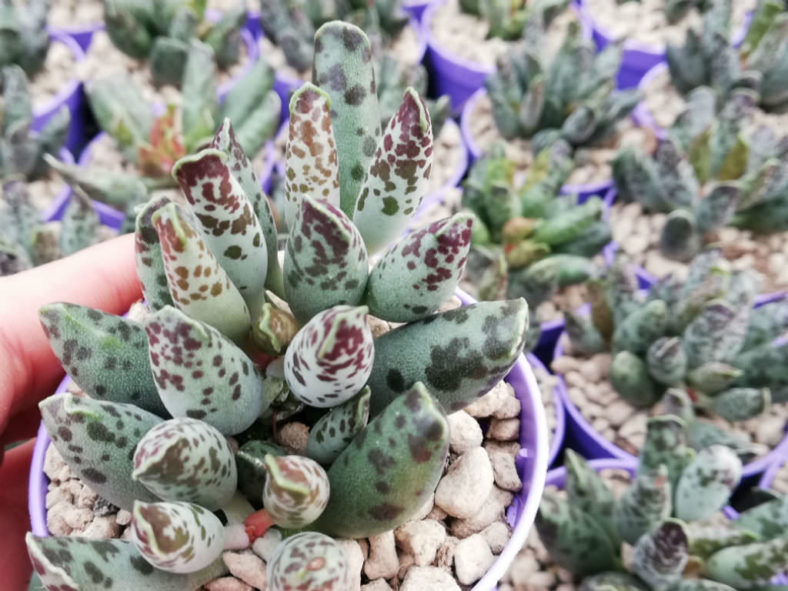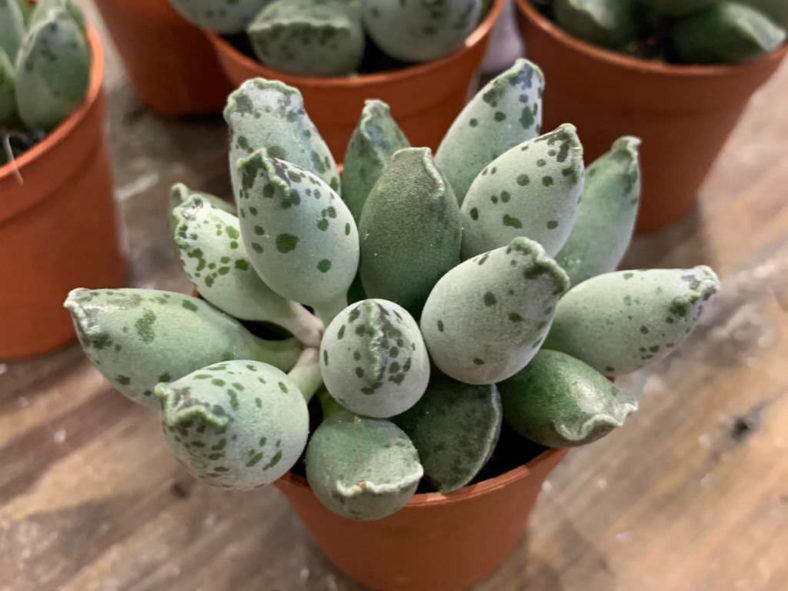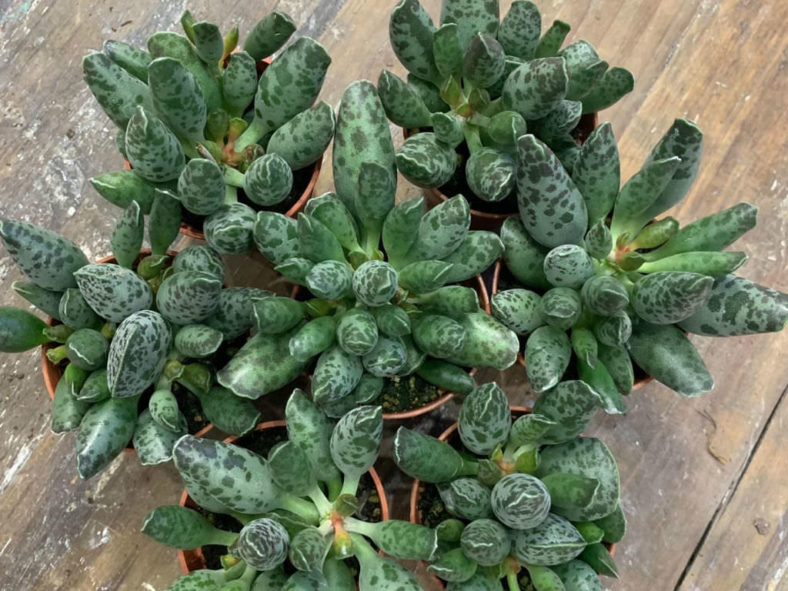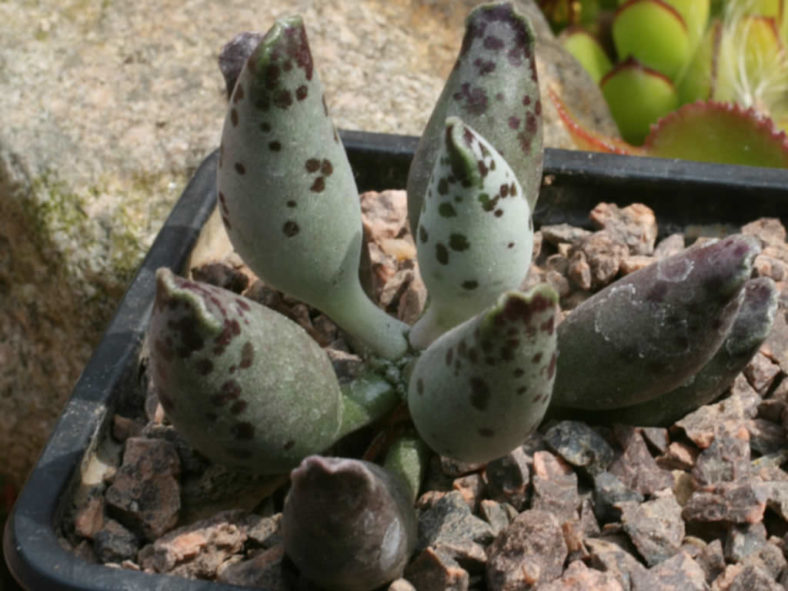Scientific Name
Adromischus festivus C.A.Sm.
Accepted Scientific Name
Adromischus cooperi (Baker) A. Berger
Common Name(s)
Plover Eggs Plant, Club Adromischus
Scientific Classification
Family: Crassulaceae
Subfamily: Kalanchoideae
Genus: Adromischus
Origin
Adromischus festivus is native to South Africa. It grows near Graaff Reinet on the slopes of the rocky hill.
Description
Adromischus festivus is an attractive succulent with a short stem and grey oval leaves with dark purple spots on the upper part. The plant can grow up to 4 inches (10 cm) tall. It is not accepted as a separate species and is treated as a synonym of Adromischus cooperi.
The main differences between Adromischus festivus and Adromischus cooperi lie in the leaf formation and the inflorescence. In Adromischus festivus, the broadest part of the leaves is below the center. The leaves are distinctly petiolate near the base. The corolla is green or brownish-green. In Adromischus cooperi, the broadest part of the leaves is above the center, near the top. At the base, they are not, or only very indistinctly petiolate. The corolla is wine-red, and the lobes on the upper face are covered with small papillae, particularly on the basal part.

Hardiness
USDA hardiness zones 9b to 11b: from 25 °F (−3.9 °C) to 50 °F (+10 °C).
How to Grow and Care
Many species are easy to grow in any free-draining, gritty compost. Their compact habit allows a collection to be maintained in a small space, and they grow well on any sunny window ledge or the top shelf of the greenhouse. Water mostly from spring to fall and let them dry out between waterings. Adromischus tolerates cool, frost-free conditions during the winter if kept dry. It is also important to keep water off the foliage during the winter. Mealybugs and vine weevils can be discouraged with a systemic insecticide.
Adromischus can be propagated from a single leaf, which should be placed against the side of the pot so that the stem end is just touching the compost. Some species drop their leaves easily, and although each leaf will form a new plant, growing a large specimen can be challenging. In other cases, leaves for propagation must be carefully detached with a sharp knife.
Learn more at How to Grow and Care for Adromischus.
Links
- Back to genus Adromischus
- Succupedia: Browse succulents by Scientific Name, Common Name, Genus, Family, USDA Hardiness Zone, Origin, or cacti by Genus
Photo Gallery
Click on a photo to see a larger version.


